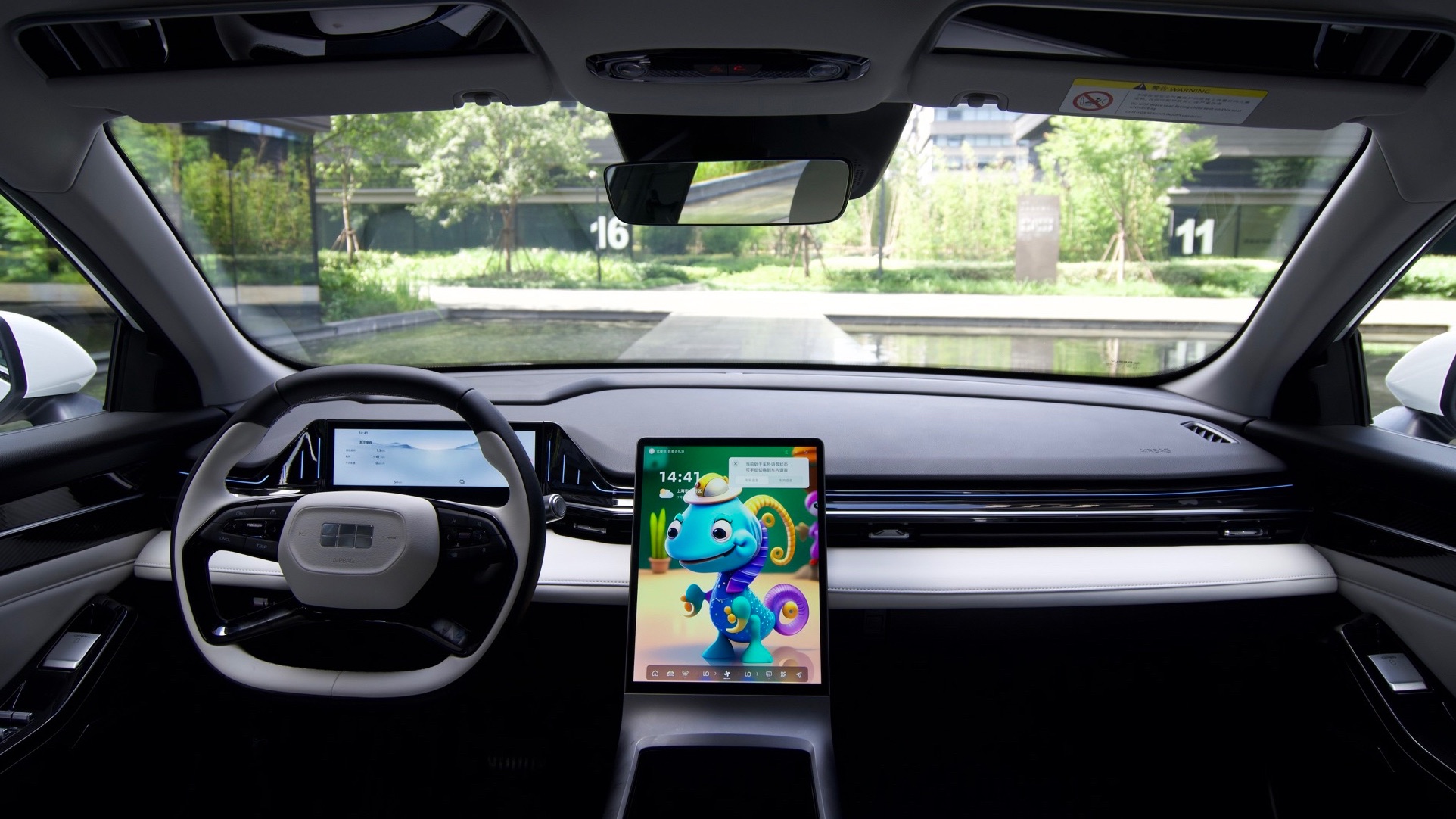Check out this car machine wallpaper of a hat-wearing “HM”, quite cute indeed. But if I told you I had this generated by AI through voice command, you’d be quite astonished, wouldn’t you?
On the upcoming “GEELY” L6, I reckon this to be the most entertaining feature in its cockpit. As long as you’ve got a strong imagination, your car machine is truly unique.

Recently, we’ve had a hands-on experience with the “GEELY” L6 AI cockpit in Shanghai, along with an evaluation of this car’s spatial utility. It must be admitted, the rapid progress in intelligence that domestic brands have made in sedan cars priced between 150k to 200k RMB is quite remarkable.
Generative AI takes a ride, voice control inside and out
Voice assistant in car is nothing new these days. But what about outside the car? While “GEELY” L6 is not the pioneer of external voice interaction, it does offer a pleasantly novel experience.
Is it really practical?
Consider these scenarios: when you’re unable to open your trunk after shopping at the supermarket, a quick voice command can solve the problem. When the car gets too hot from direct sun exposure, voice command can turn on air conditioning or lower the windows. The external speaker could even give out warnings, such as yielding to pedestrians or filling up with 92-grade gasoline, etc.
The three microphones embedded at the front and sides of the car are always ready for your summon, and a speaker at the front would respond to your queries.
And there’s a hidden Easter Egg, just say, “Hello Galaxy, start the light show”. At this point, the car windows will open halfway, and lights will dance to the music, putting on a light show.
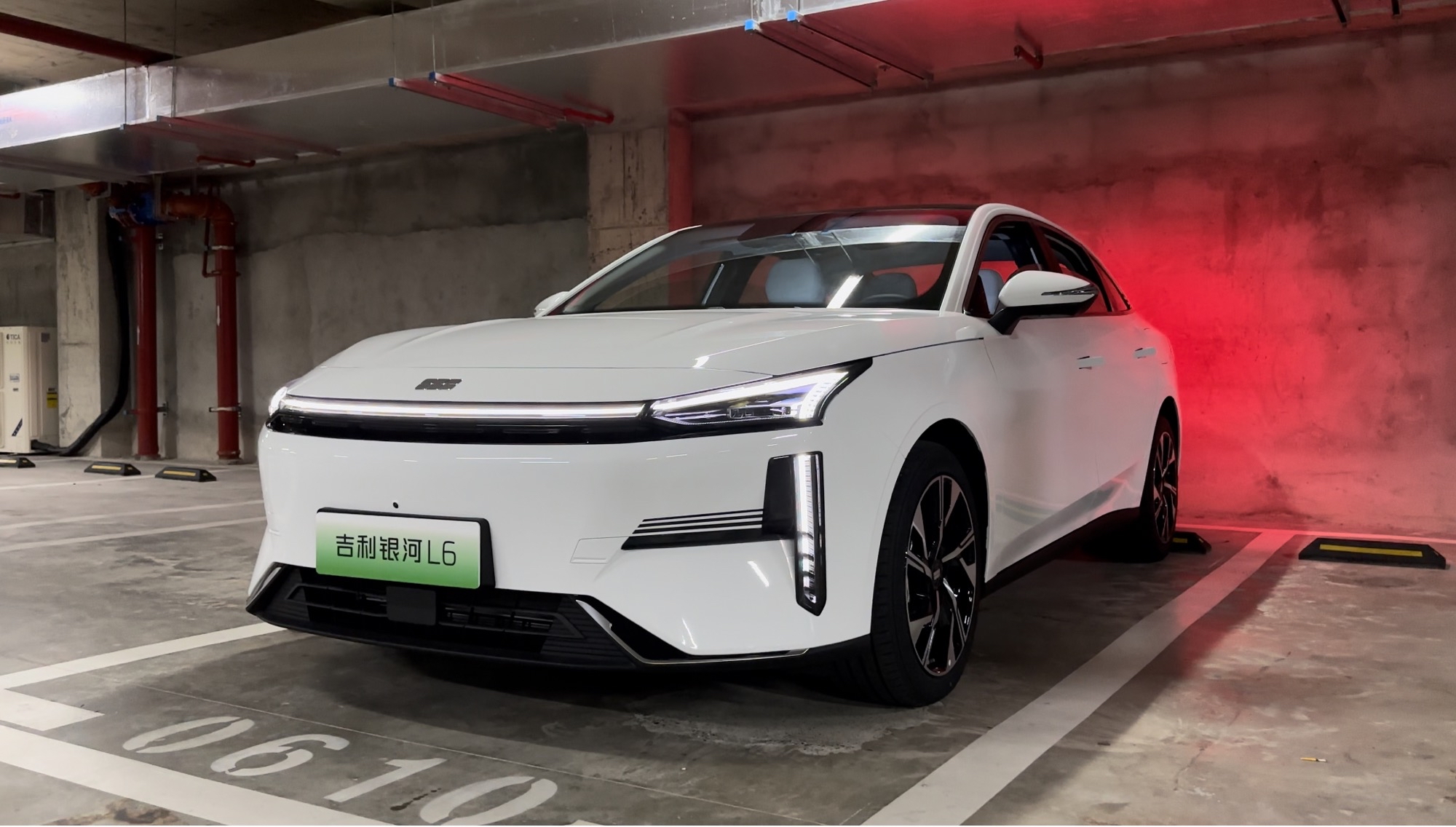
Although novel, the external voice interaction is far from perfect, with issues like slower response time compared to in-car voice interaction and lower accuracy in noisy environments.
Once inside the “GEELY” L6, its voice capabilities significantly improve, supporting quad-zone voice recognition and continuous conversation among other features. What surprised me is the bot’s speedy response. The moment I speak the activation word, I get an instant response with almost no waiting time. Official data shows it only takes 0.5 seconds for the voice assistant to respond.
The most fun feature in the car has got to be the Wow wallpaper, although it’s just a wallpaper-changing App. All it takes is a simple voice command, “Hello Galaxy, input hat-wearing HM”, and the system would generate the corresponding illustration for me.
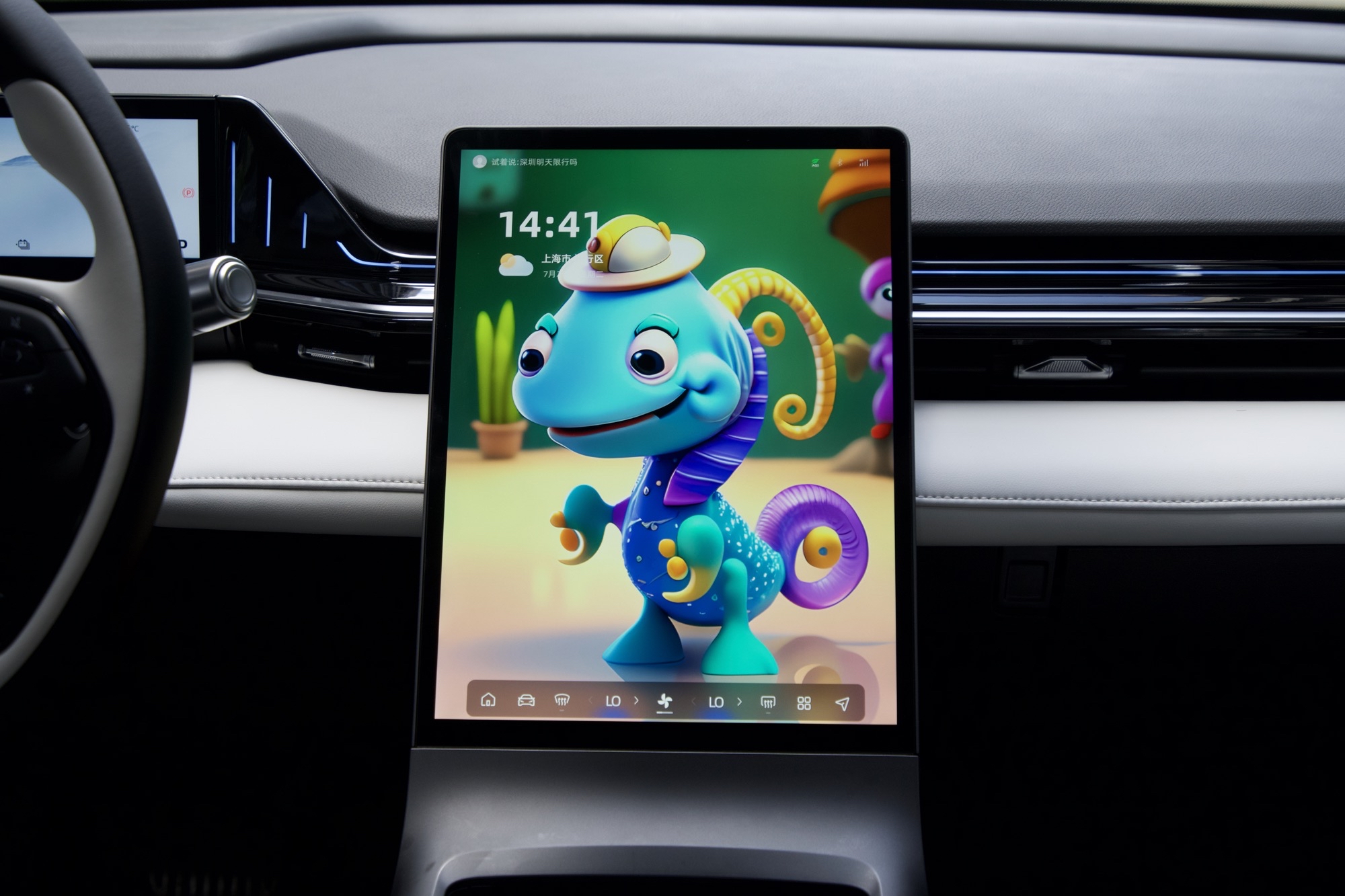
Currently, there are not many generative AI products in the market designed for in-car use. “GEELY” L6, demonstrates a high level of acceptance towards new technology with the development team, by starting with a playful and simple feature like changing wallpapers. This illustrates the team’s forward-looking vision.## Robust Hardware, Outstanding System Design
In terms of UI and system, complemented by adequate screen and chip hardware, the GEELY Galaxy L6 showcases Geely’s refreshed design philosophy.
Firstly, let’s address the hardware. The fully digital instrument cluster comes in at 10.25 inches, with a vertically mounted 13.2-inch centre-control screen boasting a resolution of 1440*1920. It’s nearly the size of an A4 sheet, providing an exceptional reading experience.
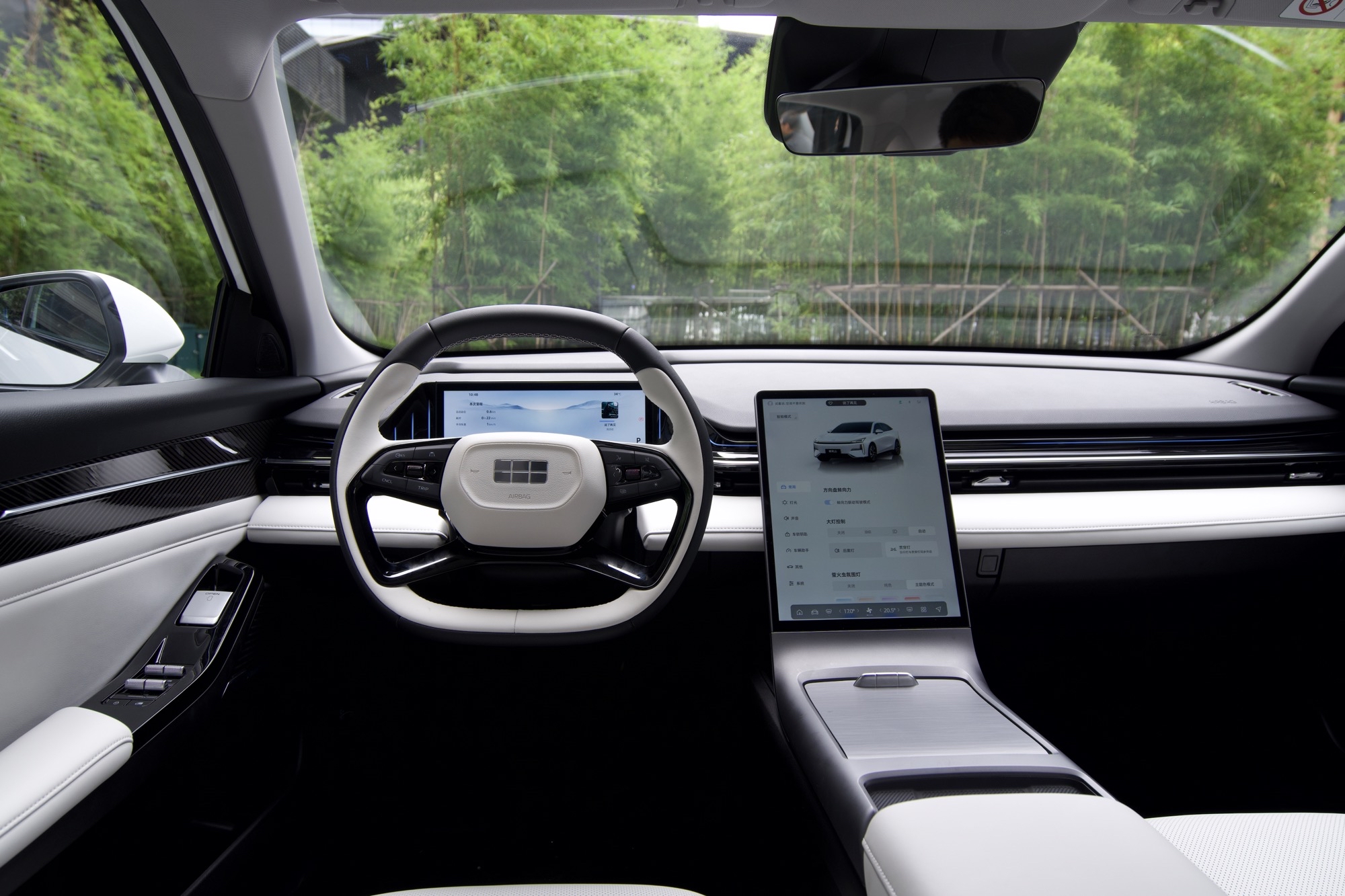
Our testing revealed that the screen’s full-screen white brightness could reach up to 1026 nit, providing clear and crisp text and graphics, even under the midday sun, proving its superior display quality.
Earlier, our Weibo fans complained about the asymmetrical screen of the GEELY Galaxy L7, leaning towards the driver. However, with the GEELY Galaxy L6, this issue was well addressed. Despite the screen still leaning towards the driver, the decoration strip at the bottom seamlessly integrates the screen into the cabin.

Additionally, the ambiance lights in sync with the music, coupled with the magnificent sunroof, substantially enhances the Galaxy L7’s cabin atmosphere.

Running on Android, the in-car system, Galaxy N OS, brings an aesthetically pleasing and buttery-smooth UI to the table.
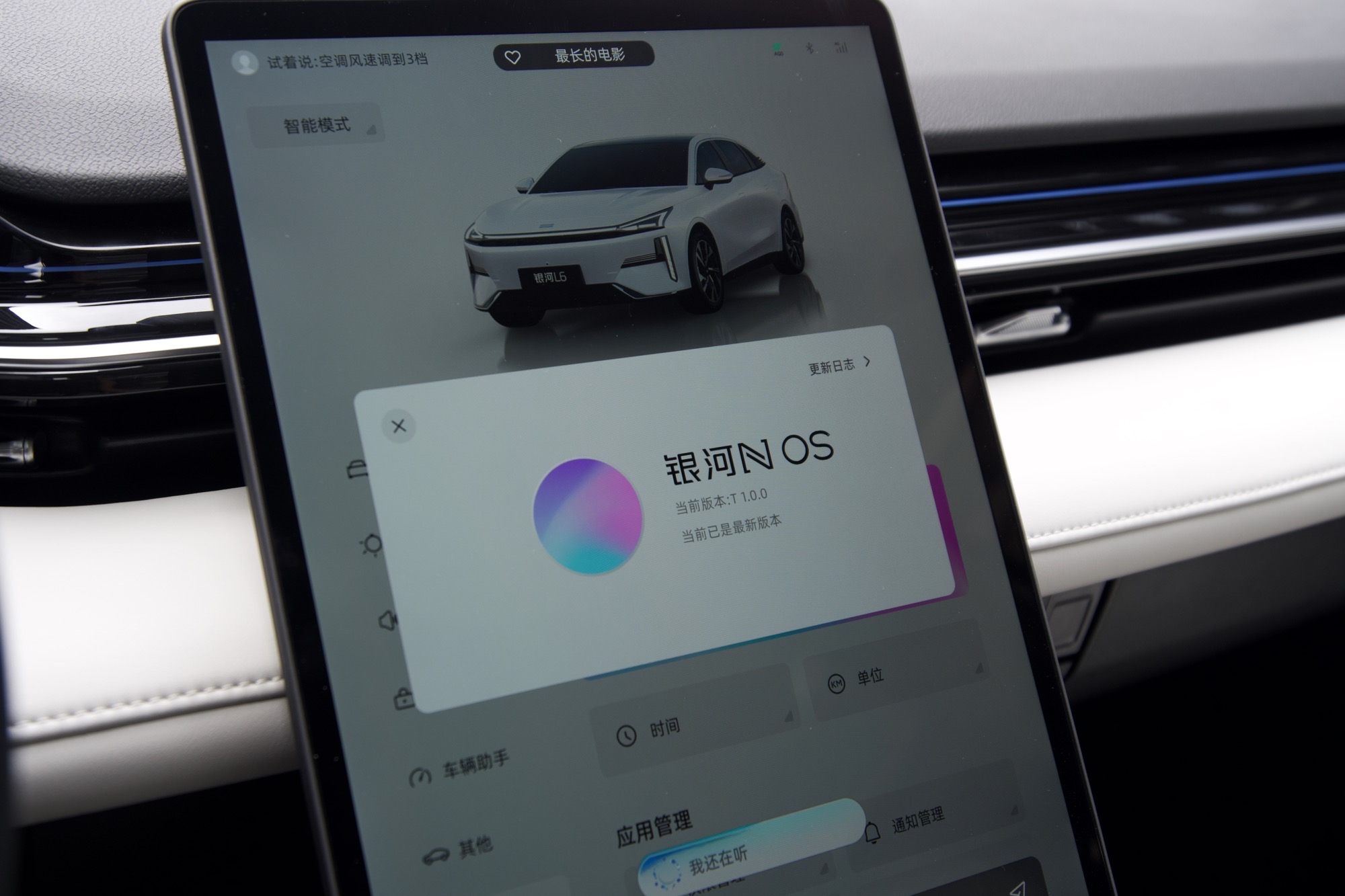
The app ecosystem is impressive, housing all day-to-day apps, along with plenty of apps for kids and games, including Migu’s ‘Cloud Gaming’.

A good UI design requires crucial gesture controls. The Galaxy N OS provides a variety of gesture control options, incorporating familiar smartphone gestures such as swiping up from the bottom of the screen for multitasking, and sweeping from the side to the center for going back.
 Furthermore, there are convenient quick gestures for vehicle system operation: a two-finger up and down slide at the center screen for volume adjustment, while doing the same at the left and right edges of the screen adjusts the temperature of left and right air conditioning zones.
Furthermore, there are convenient quick gestures for vehicle system operation: a two-finger up and down slide at the center screen for volume adjustment, while doing the same at the left and right edges of the screen adjusts the temperature of left and right air conditioning zones.
My favorite detail is the smart placement of the N OS control center call gesture in the GEELY galaxy; it is located on the upper left of the screen, nearer the driver. In contrast, the system notification center, which is rarely used- its call gesture is on the farther upper right side of the screen- a thoughtful detail.
However, there’s a feature I found initially jarring. In full screen apps, swiping up from the bottom edge of the screen once displays the Dock bar. I intuitively felt that swiping up again should return you to the home page, but the system lacks this gesture. Only by clicking the home button on the Dock bar can you return to the home page.
The navigation maps are a collaborative production between GEELY galaxy and AutoNavi. While not the smoothest, it serves daily navigation needs without issues.

Additionally, some built-in system apps are capable of split-screen display with the map, albeit only in a half-screen and non-adjustable window size.
How does it perform in terms of practical space?
For a hybrid sedan priced between 150,000 to 200,000 RMB, consumers are definitely on the lookout for practicality in accommodating multiple passengers and fuel efficiency in driving. As this is just a static experience, we can only provide an intuitive understanding of the spatial performance.
Usually, the front storage space in plug-in hybrid vehicles isn’t significantly different from fuel cars, but the Geely Galaxy L6 clearly does it better. There is a small storage space behind the screen and the center console box is remarkably deep, providing ample storage among vehicles of the same class.
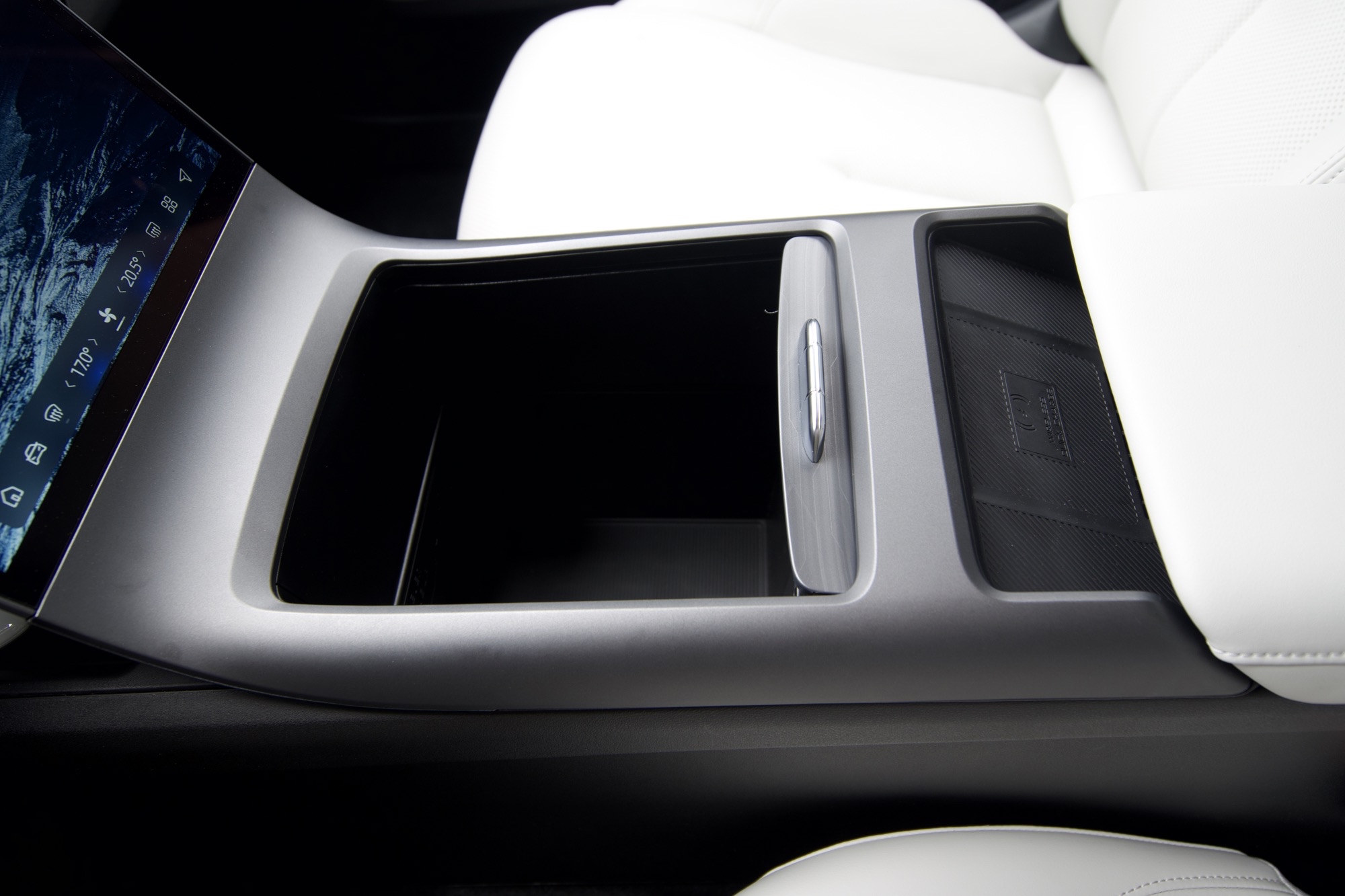
Simultaneously, the front passenger sun visor is innovative. Half retains the traditional design, and the other half resembles a polarized lens, filtering out glaring light; it’s just like wearing sunglasses. However, this section may collect fingerprints and dust, requiring regular wipes. Furthermore, under the right angles, this sun visor mirrors a reflective surface, causing me to worry about drivers getting distracted with themselves being “too handsome”.

Now, let’s consider the rear space. I am 182 cm tall with a rather heavy stature. After adjusting the front seat to my driving position, the rear space does not seem that large. Additionally, the rear footboard is relatively high, implying a feeling of sitting on a small bench. Thankfully, the seats are soft enough to provide a comfortable journey. Headroom is also limited. If you lean your head on the headrest, there is barely any space between the roof. Only by tilting your head slightly forward can you take advantage of the few extra centimeters ‘stolen’ by the sunroof.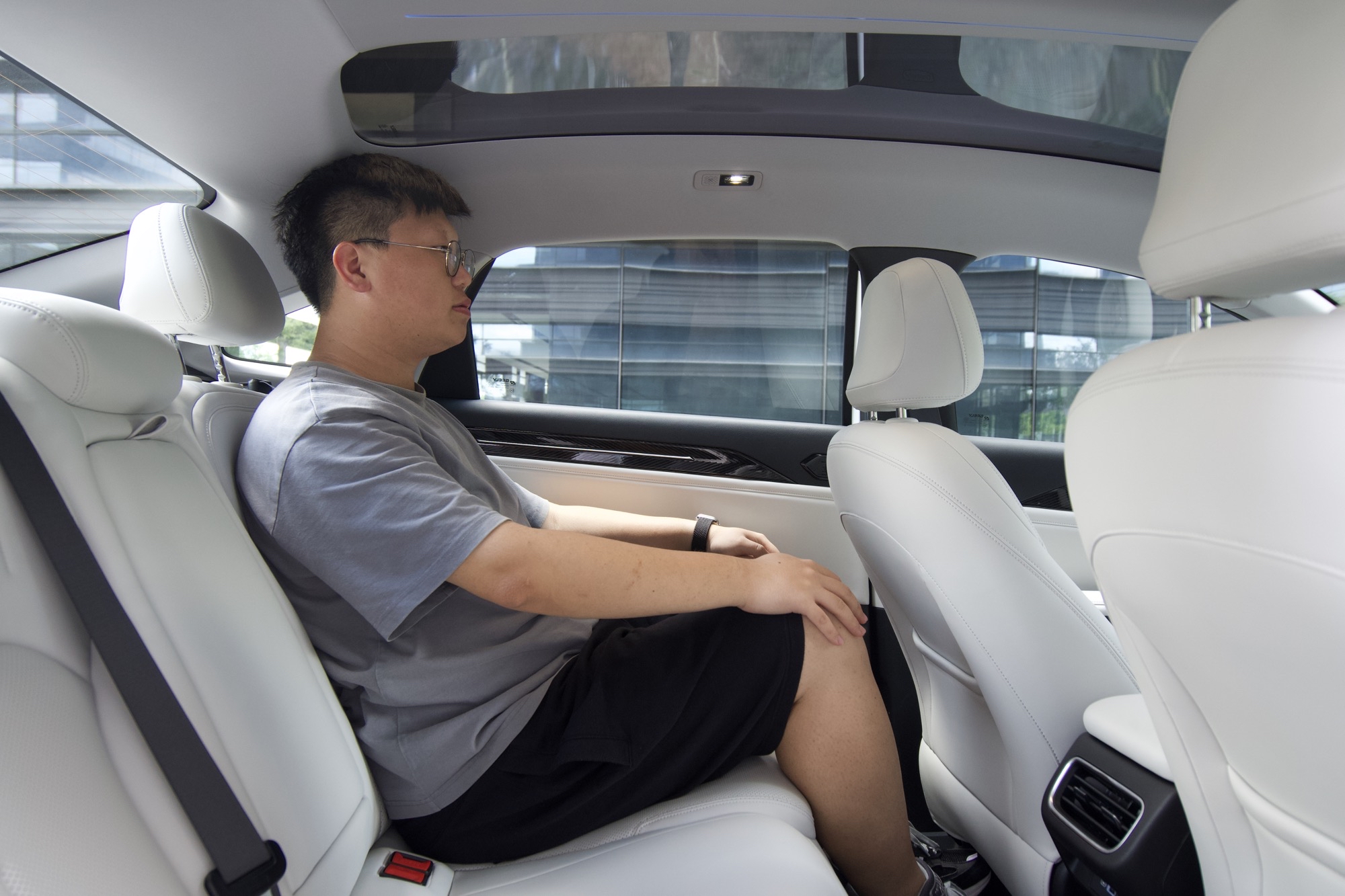
Consequently, it’s recommended that taller passengers sit in the front for maximum comfort; meanwhile, shorter passengers will find the back seats quite comfortable as well.
The trunk is manually operated, with an orderly and ample space suitable for everyday family use.
In Conclusion
For Geely, the Galaxy series are volume-driven models that consolidate its position in the 100,000 – 200,000 CNY market. The subsequent launches of the Galaxy L7 and Galaxy L6 confirm this.
At this point, the price for the Geely Galaxy L6 has not been announced, but it’s anticipated to range between 150,000 – 200,000 CNY, seemingly a bit higher than the Galaxy L7. If you’ve been following the test-drive feedback on the Geely Galaxy L6, you should have a more comprehensive understanding of this vehicle. So, what do you think the final price should be?
This article is a translation by ChatGPT of a Chinese report from 42HOW. If you have any questions about it, please email bd@42how.com.
